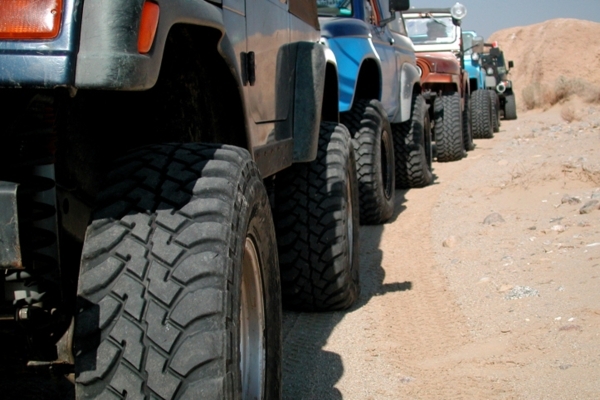Find adventure along Bitter Spring Byway
Bitter Spring Byway explores a region of rugged foothills and desert arroyos that seems remote from the sprawl of the urban Las Vegas Valley but actually lies not far to the north.
The challenging one-lane route offers scenery, history and adventure in a little-known portion of Nevada south of Valley of Fire State Park. The trail appeals to those who love off-pavement exploration on foot, on horseback, by mountain bike or by use of suitable motorized vehicles, including ATVs, motorcycles and high-clearance vehicles, preferably with four-wheel drive.
A designated Bureau of Land Management Backcountry Byway since 1989, the 28-mile route connects historic trails, old mining roads and desert washes between Interstate 15 and Northshore Road in the Lake Mead National Recreation Area. It is a good day trip to take when the skies are clear during the cooler months. To allow more time for exploration, consider camping in likely sites along the route. There are no formal campsites, water or firewood, but there is plenty of scenery.
To reach Bitter Spring Byway, drive north from Las Vegas on I-15 to the Valley of Fire exit, about 33 miles from downtown. Follow the paved park road about three miles to a point where the pavement swings to the left and a graded road points toward the dark Muddy Mountains ahead. About a mile after you leave the pavement, watch for an old road crossing your route. This is part of the Old Spanish Trail, later called the Mormon Trail, which brought explorers, mountain men, traders, Gold Rush prospectors, and settlers through Southern Nevada in the 1800s.
BLM signs indicate mileage to points of interest, such as Buffington Pockets, a colorful region of eroded Aztec sandstone similar to formations found in the Valley of Fire, and Bitter Spring (the major water source for which the route was named) a couple of miles from Northshore Road. Skinny brown BLM trail markers appear along the route, especially where there are turnings or forks. Take care, for enough people take wrong turns and have to backtrack to make some forks seem well-traveled.
Regular passenger vehicles driven carefully can negotiate the first several miles of the graded road. The surface is rough and washboarded, forcing drivers to slow down and seek the smoothest path, even using the sloped road sides. In a little pass in the foothills, the road will become too rocky to follow without a high-clearance vehicle.
Pull over to park safely, have a tailgate picnic and explore this beautiful and interesting part of the byway. A side road reaches a long-used sandstone quarry.
Look for remnants of an old borax mine, water-filled natural basins and an old rock dam that holds rainwater and fosters little marshy areas. Hikers exploring numerous side canyons find ancient rock art and other cultural remains left by the first occupants of this desert area. There are several possible campsites in the pass, but plan to bring everything from home and to take camp refuse back with you for proper disposal.
The pass provides overviews of Hidden Valley below. Flash flooding has exposed slick rock and has deposited small boulders in the pass and other places. The trail continues through White Basin, then drops into Bitter Spring Valley and Echo Wash, which runs beyond Northshore Road to reach Lake Mead at Echo Bay. Expect to find deep sand in the washes and even muddy areas near Bitter Spring or various runoff areas along the byway.
The water sources along Bitter Spring Byway attract a wide variety of desert wildlife and birds. Some are nocturnal and so elusive that you might spot only their tracks in the sand. But don't be surprised if you suddenly encounter a herd of wild horses or spot bighorn sheep watching you from rocky heights along the route.
Early indicators point to a good desert wildflower show this spring. The small early annuals should begin to show up along Bitter Spring Byway this month, followed by various kinds of cactus and other showy blooms in colorful displays lasting until high temperatures return.
— Margo Bartlett Pesek's Trip of the Week column appears on Sundays.






















